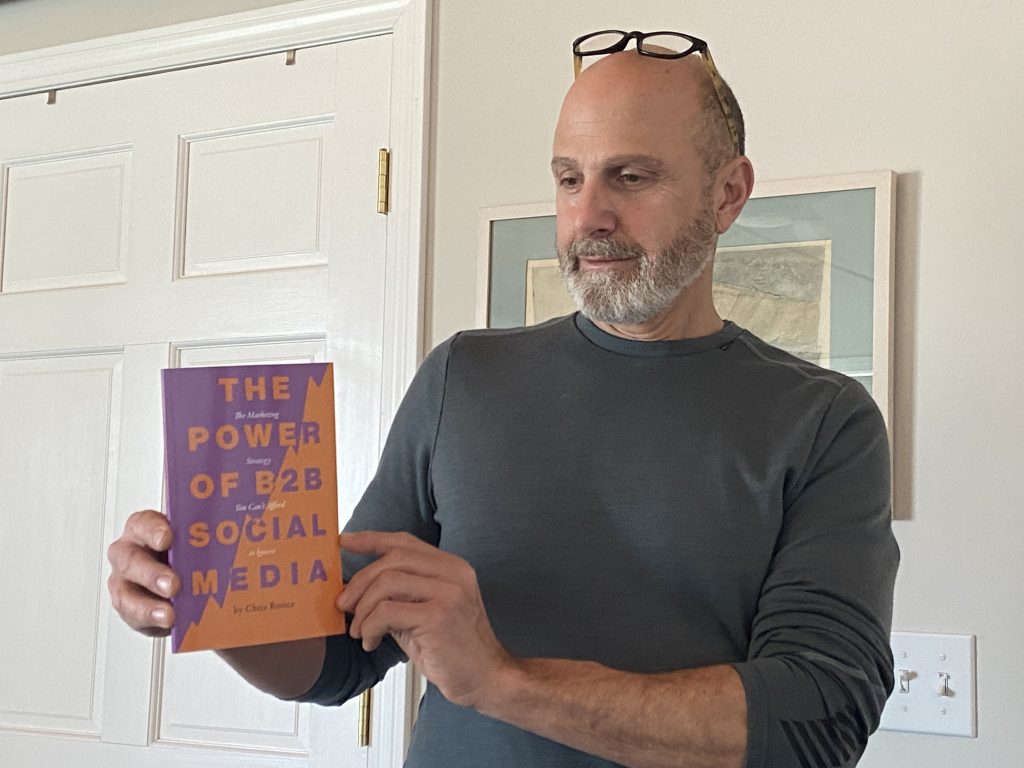This article is part of a series of writings we’ll be posting to our blog, which are excerpted from Chris Rosica’s latest book, The Power of B2B Social Media. This insightful book explores the often overlooked and undervalued benefits of B2B social media. It clearly demonstrates the advantages that businesses marketing to other businesses realize when embracing this important marketing channel.
Today, the majority of mid to large-sized business-to-business companies, and even small ones, use organic and paid search engine optimization and marketing (SEO and SEM) to attract customers. If you are failing to incorporate organic social into your marketing efforts, the marketing dollars you pay for SEO and SEM traffic are being underutilized. Without integrating organic and paid search engine marketing, organic and paid social media, and content marketing, you are likely missing opportunities to drive a larger volume of qualified website traffic.
Regardless of what percentage of your business currently comes from online sources, social media is powerful because, as previously stated, in our last blog the complex algorithm that determines which sites rank highest on Google and other search engines place social media content at the top of the proverbial food chain. In other words, when a business searches for the SEO terms for which you pay or rank for, pages generated from social media sites are displayed prominently.
In fact, we evaluated 100 B2B search terms and found that 94 percent of results included social media sites or posts on page one of organic (Google) search listings. Almost every time, the first-page search result included something akin to Wikipedia, a blog, Yelp (or other social review site), YouTube, Facebook, Twitter, LinkedIn, or other social media property.
As you can see from this data, when a company searches online to find a resource, read reviews, or identify potential vendors, social media sites nearly always appear on page-one search results. If you are ignoring social because you think it is irrelevant to B2B marketing, your brand is likely missing opportunities to be found online.
Below are the four fundamentals of using social media to drive website traffic:
1. Build, update, and optimize your social networking sites
Social networking sites are just the tip of the iceberg when it comes to social media, but they are important. You may want to consider having individual Facebook and LinkedIn pages, as well as Twitter and Instagram accounts, for your organization, chief executives, and products or services.
If you create profiles on these top networking sites, you have gone far to ensure that a few of the page one search results of your company name will be occupied by the social networking sites you control, which not only can help you dominate for your name but can also manage your image.
2. Apply basic SEO strategies to all content disseminated online
Search engine optimization is complex and ever changing. Companies packed with search experts have analyzed Google trends and evaluated the algorithm that determines where pages rank and how. But if your company needs major online reputation management control, a do-it-yourself mentality about SEO, online PR, and content development is probably insufficient. But if you want to proactively dominate page one for your name as a preemptive measure, here are a few things you can do without necessarily engaging the professionals:
- Include your company name, product, or brand in headlines, and ask anyone posting positive reviews (through your review program) to do the same. Also include your name in conjunction with relevant search terms for which you want to rank. A few mentions within an article or blog is sufficient as you do not want to engage in “keyword cramming.”
- Familiarize yourself with social bookmarking sites and bookmark the content you develop, as well as positive mentions posted by other sources.
- When linking, always use your search terms as the anchor text. For instance, instead of hyperlinking “click here,” hyperlink your company’s name, or better yet, build a link from a relevant descriptor to your homepage. This allows Google to see the association between your page and a search term.
3. Build and syndicate content using a multi-channel approach
The idea here is this: A multi-faceted approach to building and syndicating content allows you to extend your reach and capture more Web traffic.
First and foremost, reaching out through a variety of channels allows you to integrate your marketing message to reach the largest audience possible. Liken all the social media outlets to a traditional marketing campaign. You might use trade media advertising, email marketing, and conferences or tradeshows, all with the goal of reaching your potential customers wherever they may be.
The other reason for using cross promotion is this: If you take a layered approach to building and syndicating content, you can send your traffic to various social channels. After all, a business that’s interested in one piece of information about your business available on your blog will likely be attracted to related content posted on YouTube. You can send more traffic to your social channels if you intentionally use them to cross-promote each other, and you can let Google know that all the content is interrelated, which has a positive impact on SEO.
4. Try creating a Wikipedia page
As we know, Wikipedia constitutes a social media site that is comprised of user-generated content edited by an open community. It draws heavy traffic and is therefore considered highly authoritative by Google’s standards, so this site’s listings naturally appear very high in search results.
Make sure to review Wikipedia’s editorial policies to determine whether your company, brand, product, or executives fit the criteria to have pages on Wikipedia. Avoid referencing your own website or blog when incorporating citations on your entry and do not include any opinion-based or improvable claims. Entries must be objective, so stick to the facts when creating this content.
It is important to cite credible, third-party references and proof points, such as data, news sources, white papers, or studies.
Look for more excerpts from The Power of B2B Social Media by Chris Rosica on our blog in the coming weeks.
Chris is president of Rosica Communications, an award-winning national PR, digital marketing, and integrated marketing communications agency that specializes in the nonprofit, education, animal health/pet product, and healthcare sectors.

